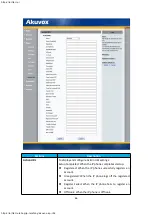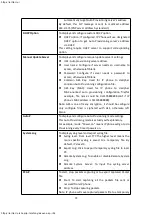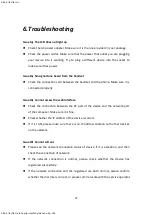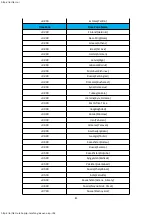
75
automatically to get Auto Provisioning server’s address.
By default, this SIP message is sent to multicast address
224.0.1.75(PNP server address by standard).
DHCP Option
To display and configure custom DHCP option.
DHCP option: If configured, IP Phone will use designated
DHCP option to get Auto Provisioning server’s address
via DHCP.
This setting require DHCP server to support corresponding
option.
Manual Update Server
To display and configure manual update server’s settings.
URL: Auto provisioning server address.
User name: Configure if server needs an username to
access, otherwise left blank.
Password: Configure if server needs a password to
access, otherwise left blank.
Common AES Key: Used for IP phone to decipher
common Auto Provisioning configuration file.
AES Key (MAC): Used for IP phone to decipher
MAC-oriented auto provisioning configuration file(for
example, file name could be 0c1105888888.conf if IP
phone’s MAC address is 0c1105888888).
Note: AES is one of many encryption, it should be configure
only configure filed is ciphered with AES, otherwise left
blank.
AutoP
To display and configure Auto Provisioning mode settings.
This Auto Provisioning mode is actually self-explanatory.
For example, mode “Power on” means IP phone will go to do
Provisioning every time it powers on.
System Log
To display syslog level and export syslog file.
Syslog level: From level 0~7.The higher level means the
more specific syslog is saved to a temporary file. By
default, it’s level 3.
Export Log: Click to export temporary syslog file to local
PC.
Remote System Log: To enable or disable Remote System
Log.
Remote System Server: To input the syslog server
address.
PCAP
To start, stop packets capturing or to export captured Packet
file.
Start: To start capturing all the packets file sent or
received from IP phone.
Stop: To stop capturing packets.
Note: IP phone will save captured packets file to a temporary








































